From Paper to Practice: Cobble Hill Garden
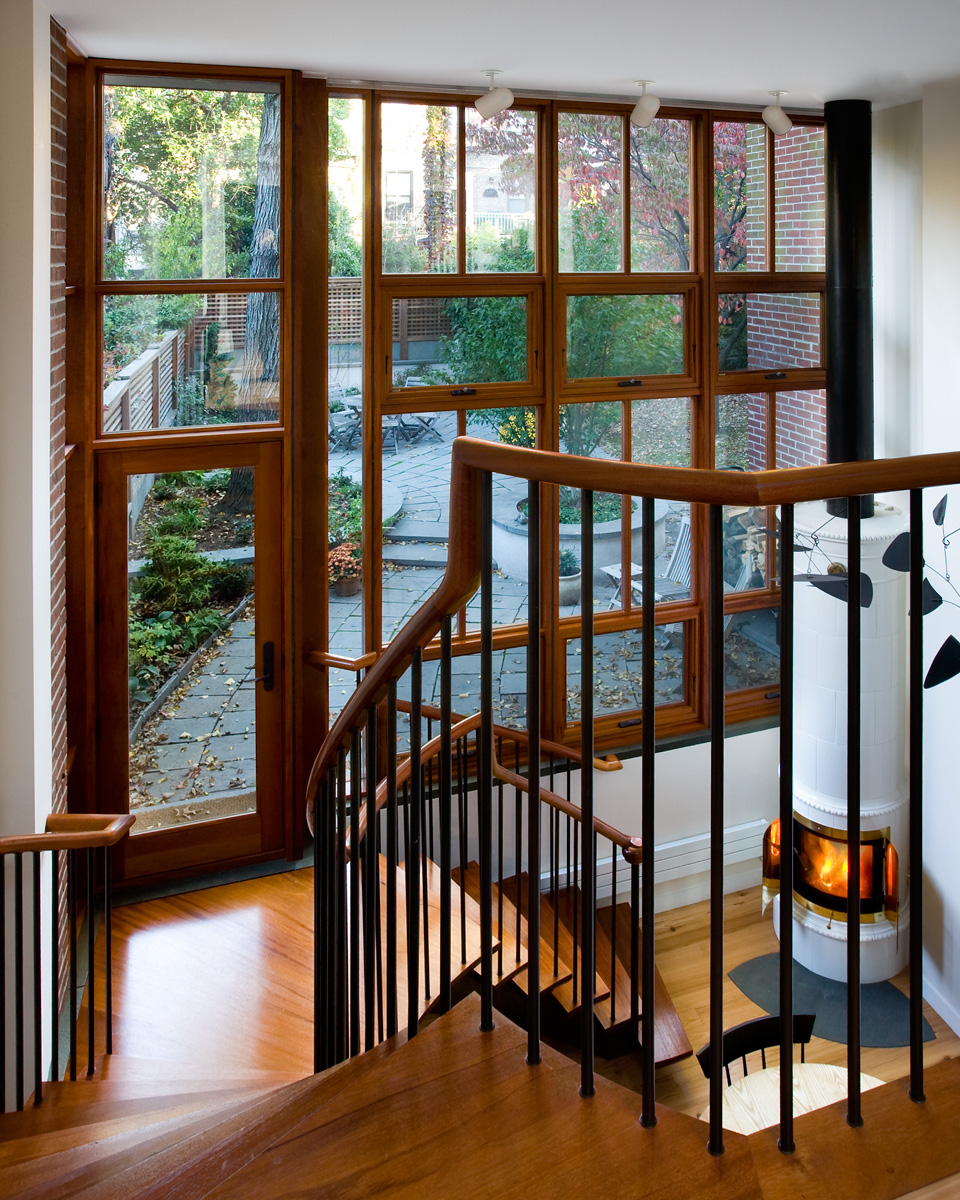
This Cobble Hill townhouse was built in the 1890s as part of a Queen Anne row of six.
Our clients, a family of four with roots in Sweden, had already lived in the house for several years. They were clear about their goals, including creating a more open flow between spaces, a stronger relationship between the parlor and garden-level living spaces, and easy, comfortable movement between those spaces and the rear yard.
Originally, the visual connection - and access to - the rear yard was limited to small doors and windows. We added a two-story volume at the rear, with large windows, to provide an expansive relationship with the outdoors and create a spatial confluence of the two main living areas and the yard.
They come together at a shared mid-level stair landing and door, providing comfortable access to the yard, each level half a floor away. The staircase is clad in warm wood treads, calling to mind the family's design sensibilities. Open risers and stringers ensure that maximum light is able to flow through the staircase into the house.
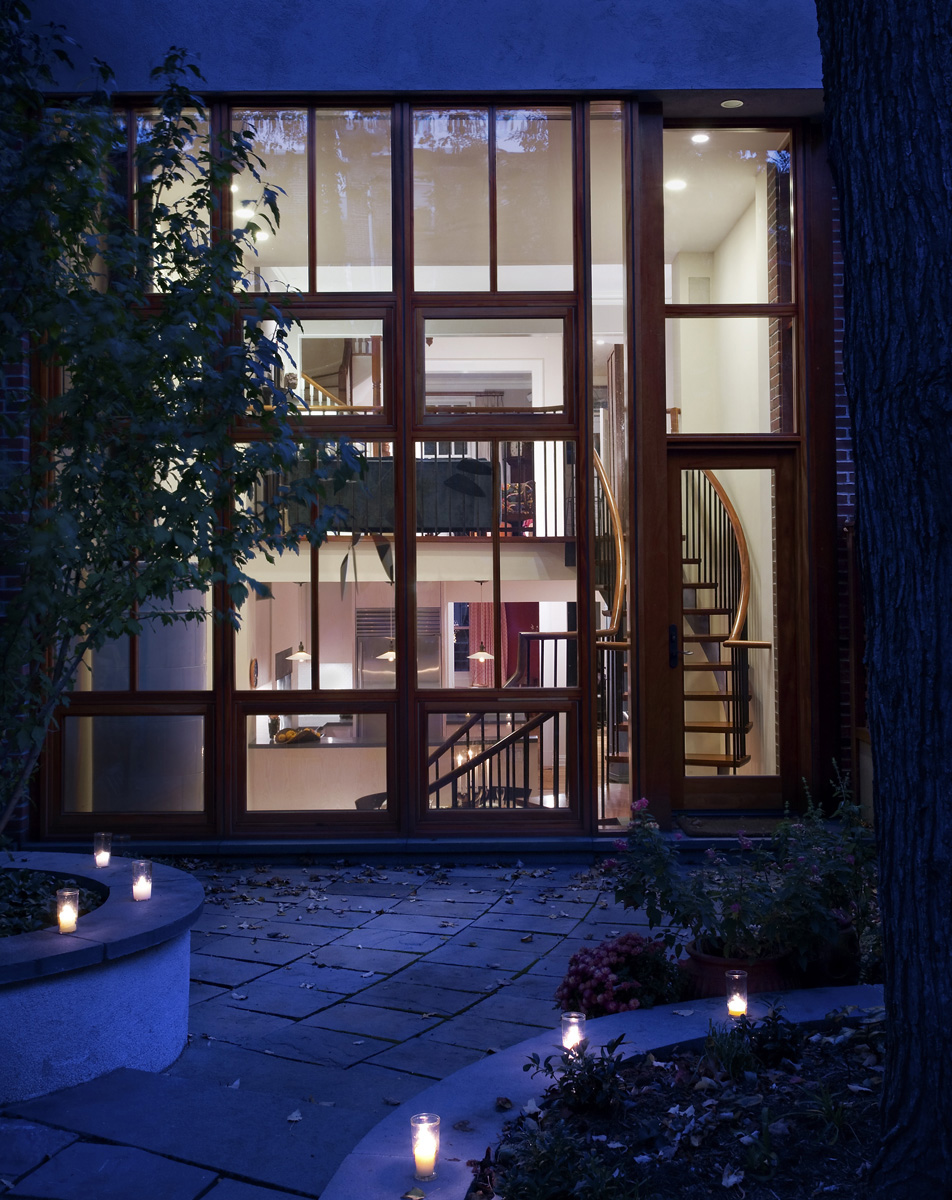
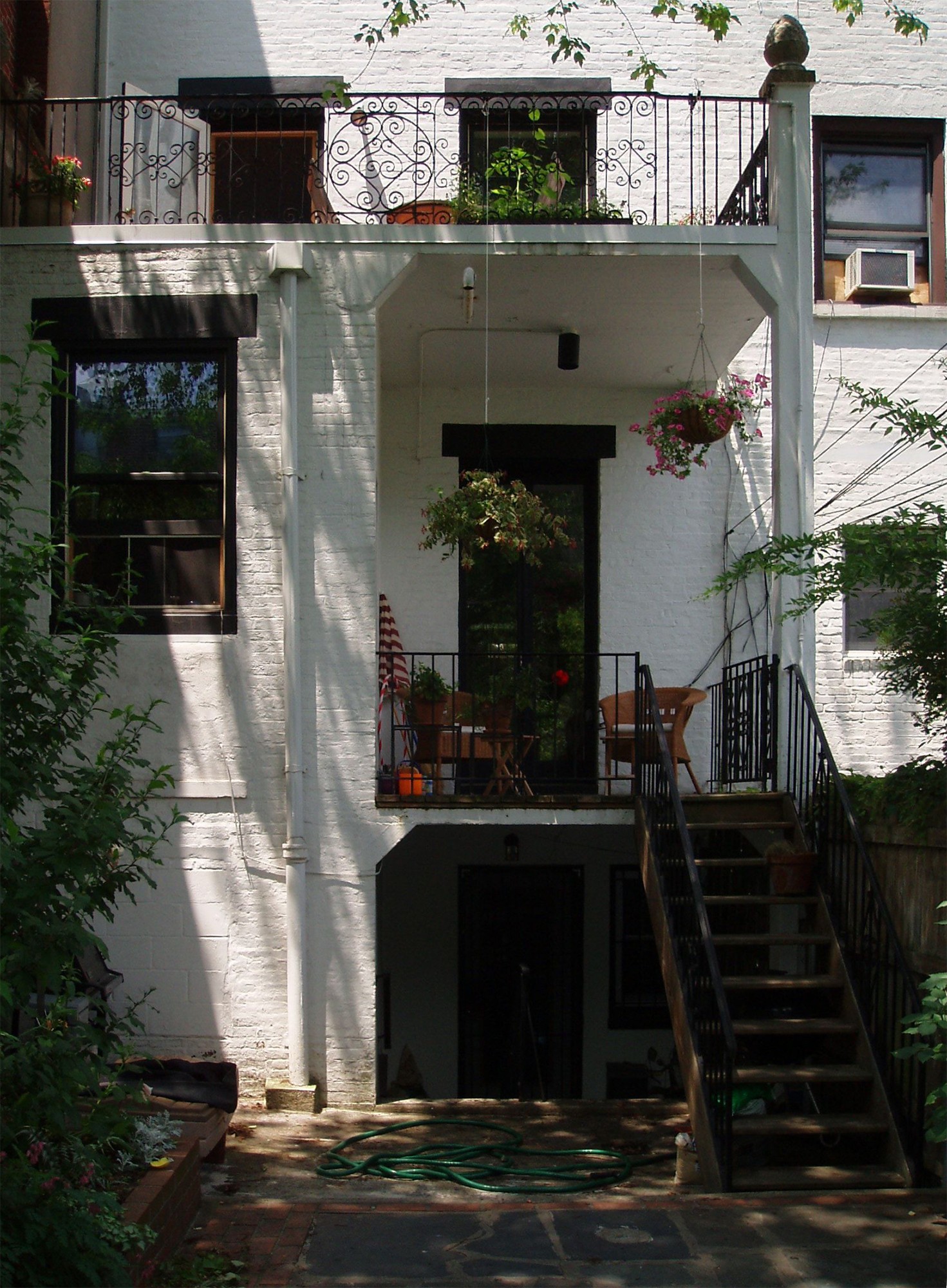
.jpg)
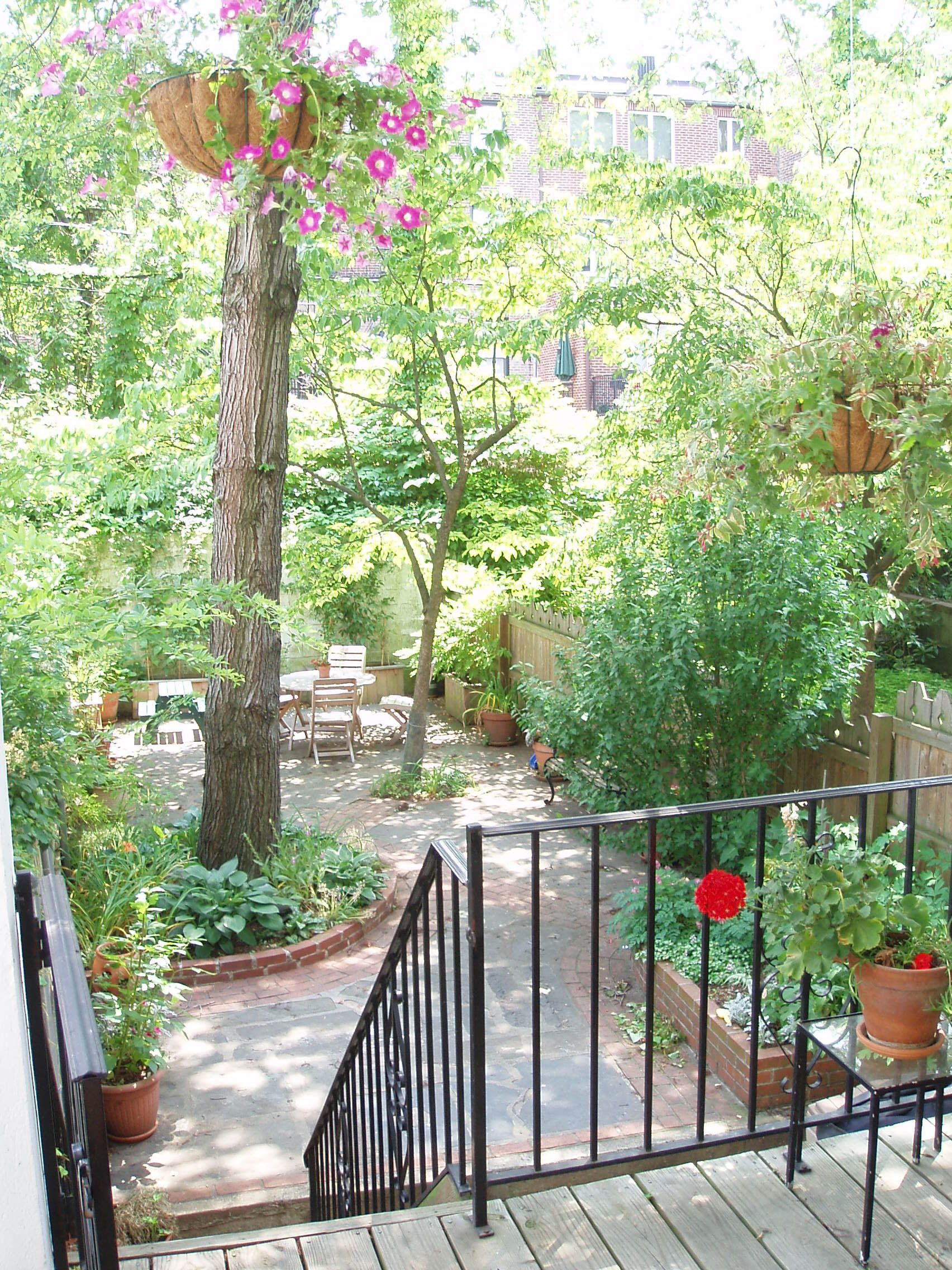
Consequently, respecting the root zone of the trees during construction of the new two-story extension was essential. In the design of the garden, maintaining the trees' grade level became a given. Retaining walls were created around the trees to protect them into the future.

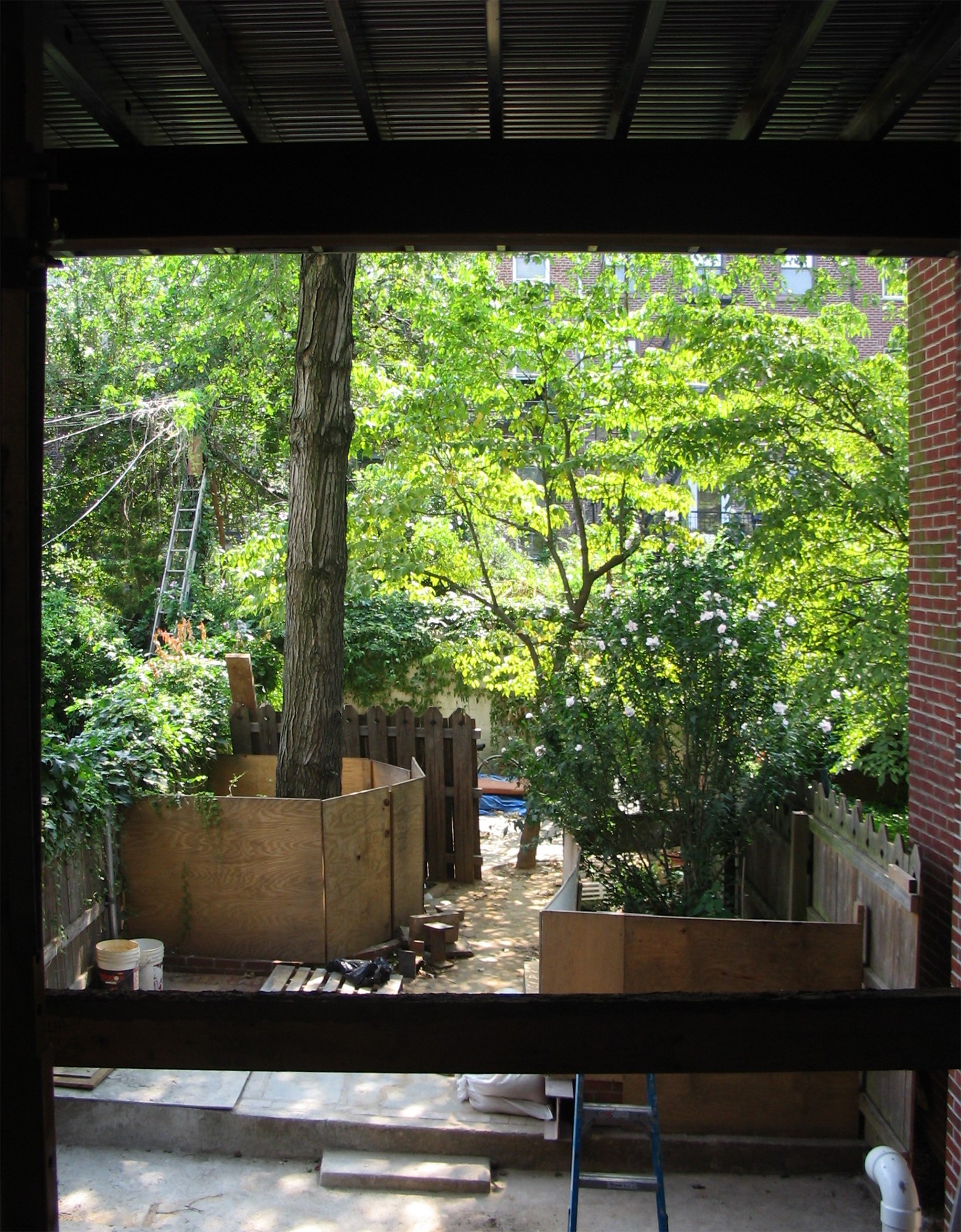
Despite a building lot only 16'8" wide, the rear yard conveys unusual spaciousness because the client family and adjoining neighbor collaborated to remove a significant portion of fence separating them. The mid-level stair landing, existing grades at prominent trees, and the level of the neighbor's yard dictated hardscape levels throughout the landscape design.
Within this framework, the layout then became an exploration of placement for activities, views, and landscape features. From there, the use of scale, pattern, texture, and material provided an informal, light, and warm spirit of Scandanavian ease and comfort.
.jpg)
.jpg)

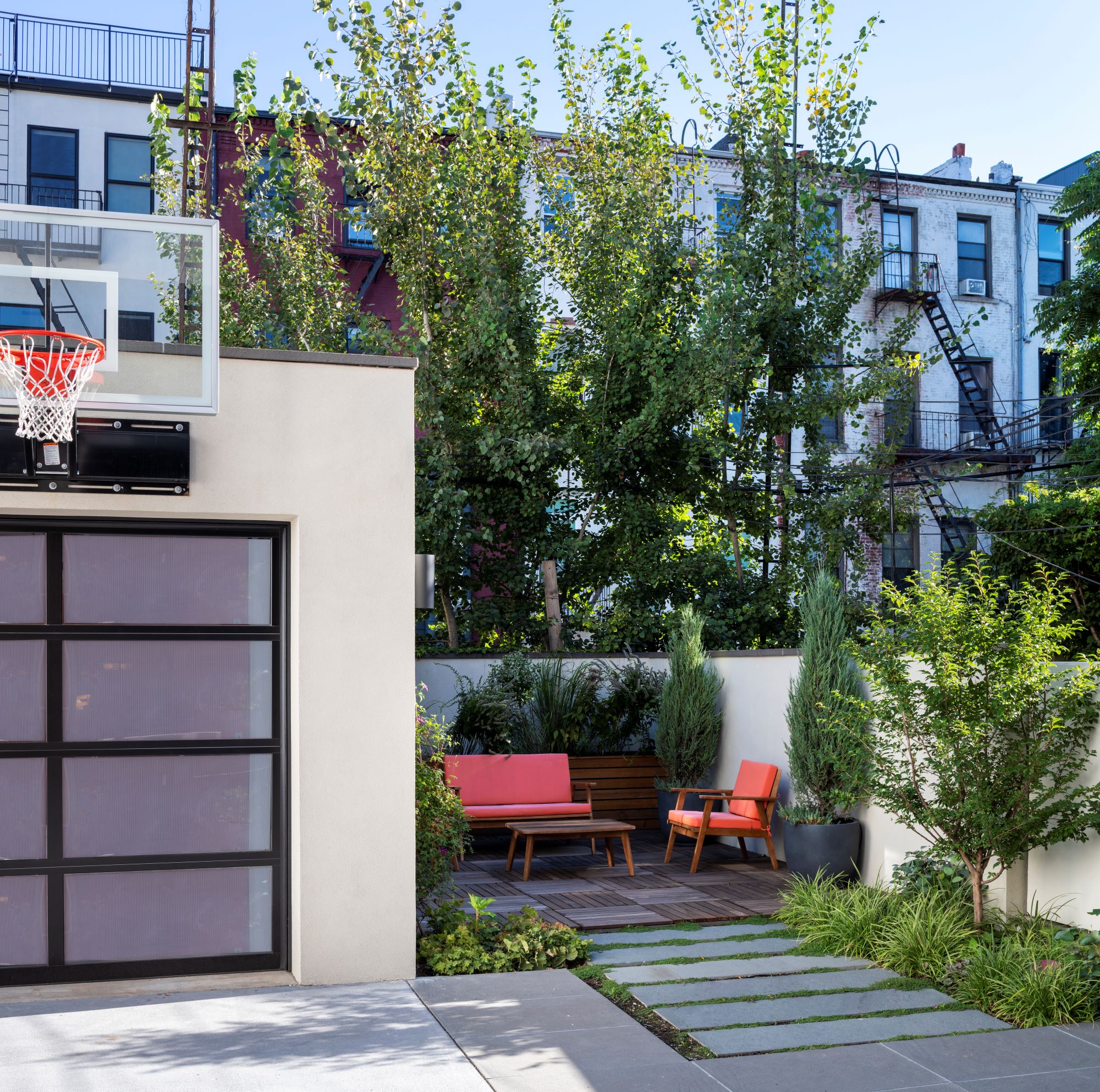
.jpg)
.jpg)